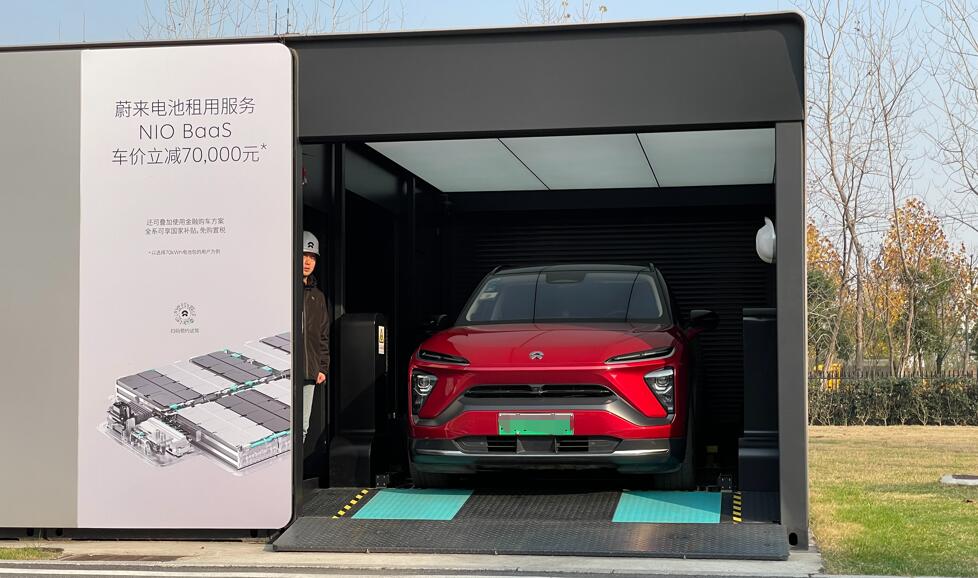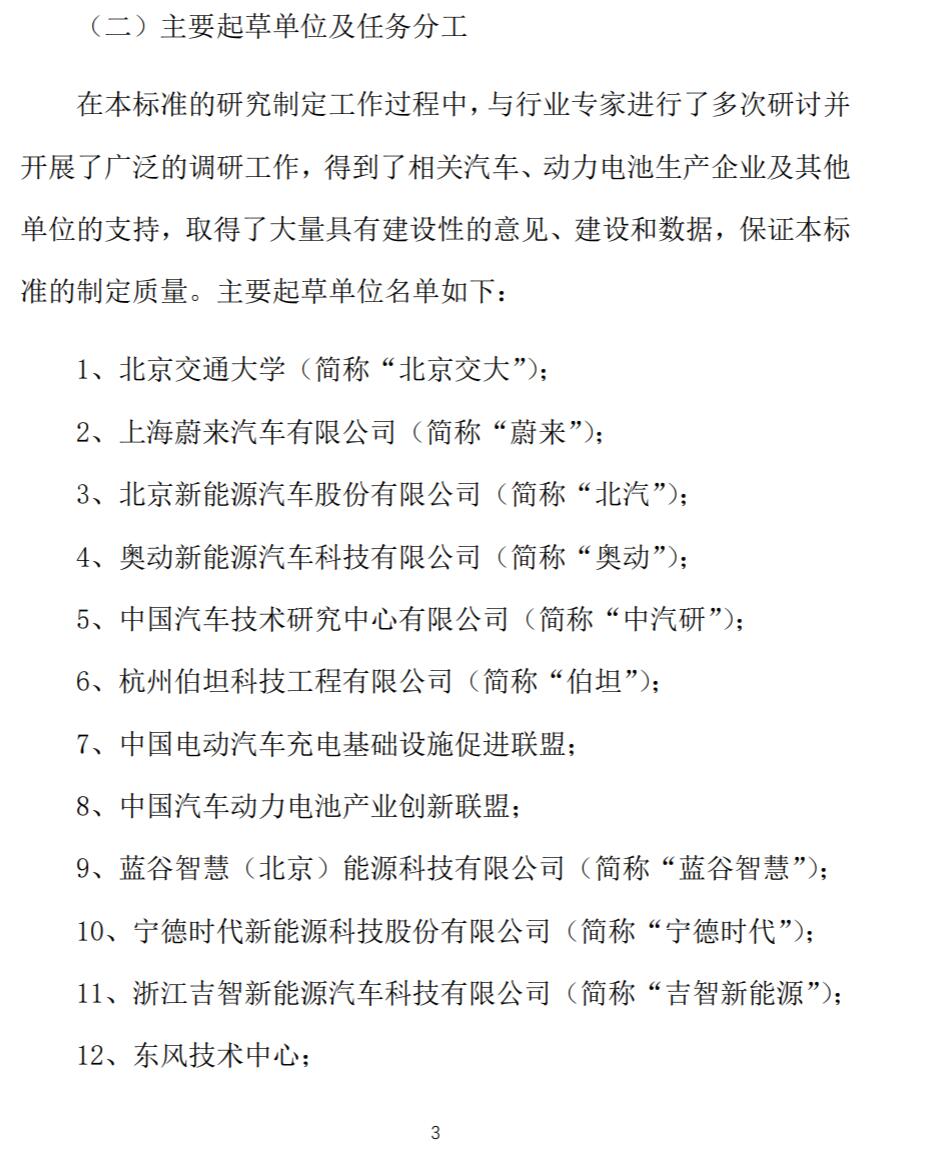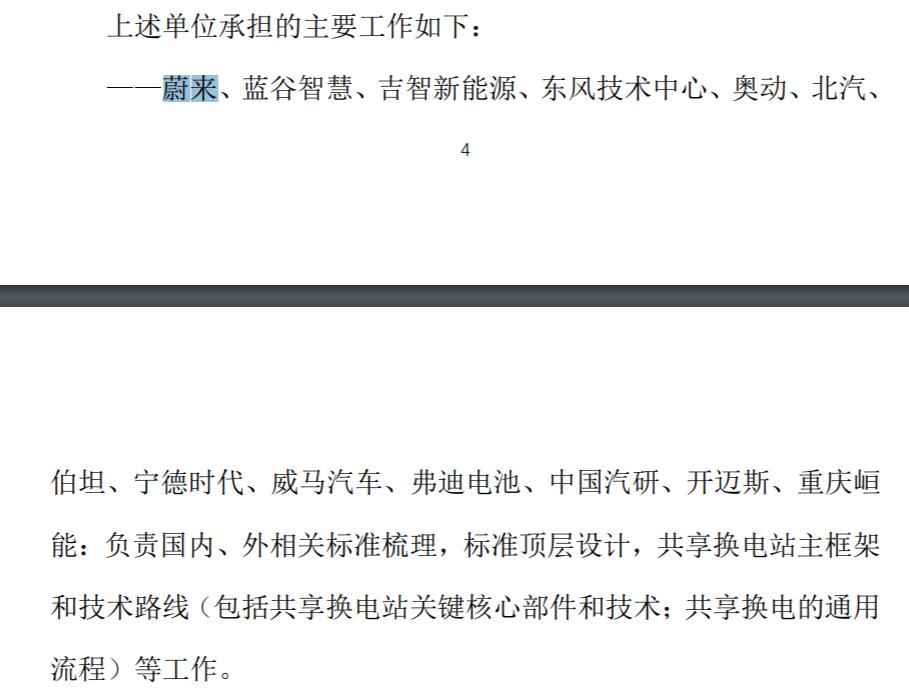China's battery swap-enabled models are expected to see further development as an industry association begins seeking comments on a draft technical standard led by entities including Nio.
The China Association of Automobile Manufacturers (CAAM) on Tuesday released on its website a draft of a group standard for the construction of shared battery swap stations for electric passenger cars, signaling that the previously criticized lack of standards in the field is expected to ease at an accelerated pace.
The CAAM released a total of 15 documents, covering technical requirements for battery swap platforms and devices, communication protocol requirements for battery packs, technical requirements for battery packs, technical requirements for liquid-cooled connectors, technical requirements for battery storage systems, and planning and layout requirements for battery swap stations.
The CAAM said that the standard aims to realize the sharing of battery swap platforms and even battery swap devices and to achieve preliminary data access and interconnection.
The standard hopes to promote battery swap mode toward more convenience and safety, scale development and further cost reduction from the perspective of vehicle, battery pack and battery swap device linkage, the CAAM said.
The entities involved in drafting the technical standard include Beijing Jiaotong University, Nio, Beijing Electric Vehicle Co Ltd, and public battery swap station operator Aulton.
Thirteen companies, including Nio, undertook the work including the top-level design of the standard, the main framework and technical route for shared swap stations, key core components and technologies for shared swap stations, and common processes for shared swap.
These documents are too technical for us, so if you are interested in the details, you can check the link below (in Chinese).
http://www.caam.org.cn/chn/1/cate_3/con_5234391.html
The public has until September 12, 2021 to submit feedback on the documents if they have comments.
It is worth noting that a previous safety standard on battery swap was approved and will be implemented in November. the latest standard released by The CAAM focuses on technical details.
Earlier in May, China's State Administration for Market Regulation (SAMR) had approved the national standard "Safety Requirements for Battery Swap for Electric Vehicles" (GB/T 40032-2021), making it the industry's first mandatory standard regulating the development of the battery swap model. The standard is a mandatory one.
The standard, drafted by companies including Nio, Beijing Electric Vehicle Co Ltd and Geely, will come into effect on November 1 this year and sets out the safety requirements, test methods and inspection rules for battery swapable electric vehicles.
The SAMR said that the standard is the first basic national standard in the battery swap field in China's automotive industry, which will help improve the safety level of electric vehicles using battery swap technology in terms of mechanical strength, electrical safety, environmental adaptability, etc., and ensure the safety of battery swap electric vehicles.
At present, vehicles supporting battery swap have taken shape in China, with Nio being the only vehicle manufacturer to deliver such vehicles on a large scale for general consumers. As of August 14, Nio has 366 battery swap stations in China.
A number of companies, including BAIC BJEV, are offering these models in large numbers for the cab market.
BAIC BJEV says it began developing battery swap in 2011 and has been exploring battery swap operating models from 2016 to 2018.
As of November 2020, BAIC BJEV had 225 battery swap stations in 19 cities in China, with 22,000 battery swap-enabled vehicles in operation.
Geely says it started battery swap deployment in 2017, with more than 1,000 R&D staff and over 30,000 experiments.
SAIC launched its battery swap-enabled Roewe Ei5 in March and says it will have more than 3,000 vehicles in the market by the end of the year.
Since last year, the battery swap model has received strong support from Chinese policy, with several government departments mentioning support for the construction of battery swap infrastructure.
Last April, China set a requirement that subsidies for the new energy vehicle industry must be priced under RMB 300,000, but battery swap-enabled models are exempt from this requirement, allowing the high-end Nio to continue to enjoy the subsidies it has enjoyed in the past.
As for why China supports the development of the battery swap model, Vice Minister of the Ministry of Industry and Information Technology Xin Guobin mentioned the advantages of the battery swap model at a conference last year.
First, the battery swap model allows the body to be separated from the battery, which can reduce the cost of purchasing a vehicle for consumers.
Second, the battery swap pool time is shorter than the time to fill a tank of gas, which can make consumers travel more convenient.
Third, the battery operation company will monitor, maintain and manage the battery centrally, which is conducive to extending the life of the power battery and improving the safety of the battery.
Fourth, such batteries can be charged at preferential tariffs that are underestimated by electricity consumption, thus reducing charging costs.
Fifth, consumers can consider how large the capacity of the battery rented that day according to the daily mileage, saving energy.
Sixth, the battery swap model can also give rise to new service industries.



